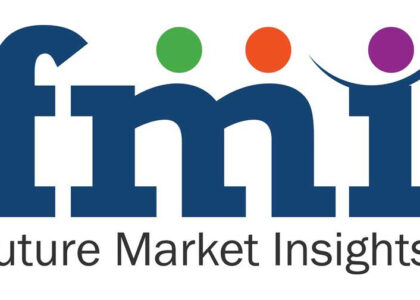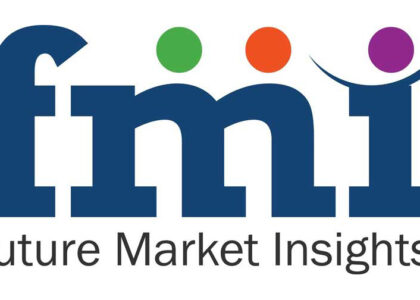The Capillary Under fill material are used to encapsulation of the bottom side of a silicon die, encapsulation can be defined as a top surface where delicate parts are interconnected, but in capillary underfill material it interconnects on the bottom side of the die.
Underfill materials, comprised of blends of inorganic fillers and organic polymers, serve as integral components in semiconductor packaging, enhancing thermo-mechanical performance. Polymer adhesives play a key role in the application of underfill materials, effectively redistributing mechanical stress at joints arising from variations in thermal expansion factors. This strategic use of underfill materials contributes to the overall reliability and durability of semiconductor devices, ensuring optimal performance in the face of thermal and mechanical challenges within the packaging process.
Among application, the flip-chip segment is anticipated to grow at rapid pace in the forecast period as the demand for smaller, lighter and cost effective devices is seeking the attention towards the capillary underfill material.
Request Sample Report: https://www.futuremarketinsights.com/reports/sample/rep-gb-4435
The Asia-Pacific region holds the top position in the Global Capillary Underfill Material Market and is expected to maintain its leading position throughout the forecast period, with North America and Europe following closely. Recognized as the most lucrative market in terms of revenue for Global Capillary Underfill Material, Asia-Pacific stands out as a key player in driving the market’s growth, driven by increasing demand for advanced semiconductor packaging technologies and manufacturing activities in the region. This underscores the region’s significance in the global capillary underfill material landscape, with sustained market attractiveness and opportunities for manufacturers and stakeholders.
Market Drivers-
- Semiconductor Miniaturization: The trend toward smaller, more compact electronic devices and components drives the demand for capillary underfill materials, which can protect and insulate these miniaturized semiconductor packages.
- High-Density Interconnects: The increasing complexity of integrated circuits requires more advanced underfill materials to ensure reliable electrical connections in high-density interconnects.
- Growth in Electronic Devices: The growing use of electronic devices in various industries, from consumer electronics to automotive and telecommunications, creates a steady demand for capillary underfill materials.
- Consumer Electronics Boom: The rapid evolution of consumer electronics, including smartphones, tablets, and wearables, relies on advanced semiconductor packaging technologies, contributing to the need for underfill materials.
- 5G Technology: The deployment of 5G networks and the development of 5G-compatible devices necessitate reliable semiconductor packaging and underfill materials to handle higher data rates and frequencies.
- IoT Expansion: The Internet of Things (IoT) continues to expand, driving the demand for semiconductor devices and, consequently, capillary underfill materials.
- Automotive Electronics: The automotive industry increasingly relies on advanced electronics for vehicle safety, infotainment, and automation, spurring the demand for underfill materials in automotive applications.
Key Players:
Some of the players operating in the Capillary underfill Material includes
- Namics Corporation,
- Zymet,
- Nordson Corporation,
- Epoxy Technology Inc.,
- YINCAE Advanced Material, LLC,
- H.B. Fuller,
- Master Bond and
- Henkel Ag & Co. Kgaa, and
- few other regional players.
According to the research report, above players are increasingly investing in research and developmental activities to develop solutions in order to improve their technological advancements and to enhance the product portfolio and broaden their consumer base.
Market Restraints-
- High Cost: Capillary underfill materials, particularly advanced formulations, can be expensive. The cost of materials can impact production expenses for semiconductor manufacturers.
- Technological Challenges: Developing underfill materials that meet the evolving technological requirements of semiconductor packages can be challenging and resource-intensive.
- Supply Chain Disruptions: The industry can be vulnerable to supply chain disruptions, such as shortages of raw materials or other components, which can impact production.
- Rapid Technological Changes: The semiconductor industry is characterized by rapid technological advancements and evolving standards. Manufacturers must adapt quickly, which can be costly.
- Regulatory Compliance: Meeting regulations related to the use and disposal of certain materials, especially in environmentally sensitive regions, can be a restraint for underfill material manufacturers.
- Environmental Concerns: The disposal of certain underfill materials may raise environmental concerns due to their chemical composition, leading to stricter regulations.
- Global Economic Fluctuations: Economic downturns can impact the semiconductor industry’s demand and the willingness of manufacturers to invest in advanced underfill materials.
- Alternative Packaging Technologies: Emerging alternative packaging technologies may offer cost-effective and efficient solutions, potentially reducing the demand for capillary underfill materials.
Buy Now/Purchase: https://www.futuremarketinsights.com/checkout/4435
Key Segmentations-
Based on the Product Type
- No Flow Underfill Material
- Molded Underfill Material
- Others
Based on the Application
- Flip Chips
- Ball Grid Array (BGA)
- Chip Scale Packaging (CSP)
- Others
About Future Market Insights (FMI)
Future Market Insights, Inc. (ESOMAR certified, recipient of the Stevie Award, and a member of the Greater New York Chamber of Commerce) offers profound insights into the driving factors that are boosting demand in the market. FMI stands as the leading global provider of market intelligence, advisory services, consulting, and events for the Packaging, Food and Beverage, Consumer, Technology, Healthcare, Industrial, and Chemicals markets. With a vast team of over 5000 analysts worldwide, FMI provides global, regional, and local expertise on diverse domains and industry trends across more than 110 countries.
Contact Us:
Future Market Insights Inc.
Christiana Corporate, 200 Continental Drive,
Suite 401, Newark, Delaware – 19713, USA
T: +1-845-579-5705
For Sales Enquiries: sales@futuremarketinsights.com
Website: https://www.futuremarketinsights.com
LinkedIn| Twitter| Blogs | YouTube




